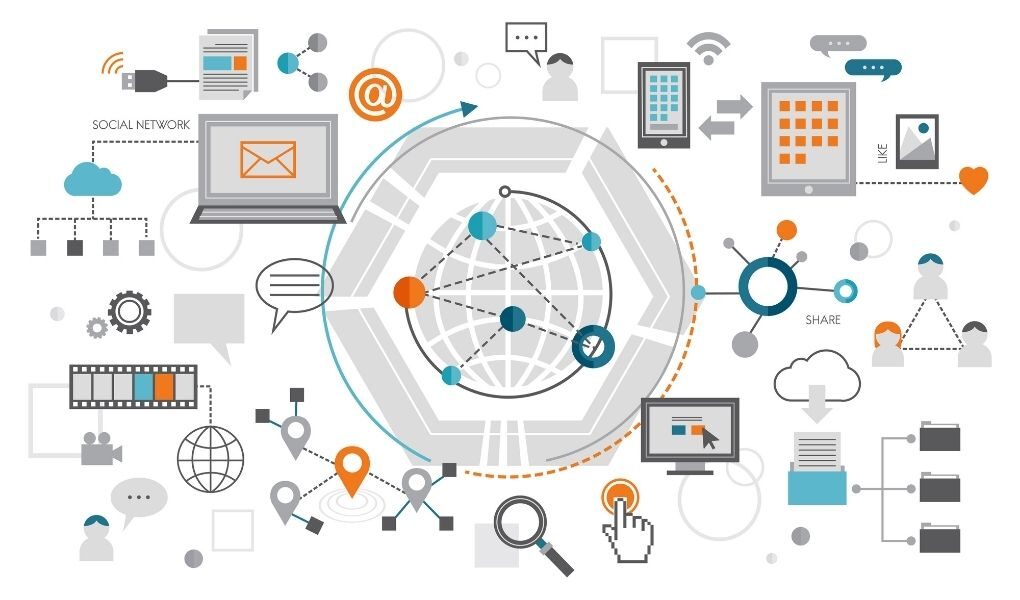Table of Contents
From AI To Blockchain, What Are The Main Tech Trends Impacting The Financial Services And Banking Sector?
2020 promises to be a particularly important year for banking. The disruptive impact of some technologies and, in particular, of Artificial Intelligence and Blockchain, is revolutionizing the relationship between credit institutions and account holders. Furthermore, the investments made to guarantee PSD2 compliance and support Open Banking strategies seem destined to generate new business opportunities soon.
The new buzzword for banking marketing is “personalization”, which rhymes with digitization. Competition from non-bank operators – the so-called FinTech’s- is becoming tighter and tighter and pushing the sector towards an unprecedented evolution. But what are the trends that, more than others, will redesign the banking sector over the next year? Here are the ones that leading analysts have identified.
1. Open Banking Redesigns The Offer
The definitive entry into force of PSD2 on September 13th brought a breath of fresh air to the financial services sector. The European directive on digital payments promotes the principle of Open Banking and obliges financial institutions to create common interfaces and platforms for sharing information on the financial situation of customers.
For years, banks have focused on a vertical and extremely specialized offer, while today the entry of new non-bank technology operators, the so-called Fintechs, pushes towards a more horizontal and broad offer that sees digital as a strong lever of differentiation.
The digital aggregation of current accounts, for example, it is already becoming a commodity while the more traditional functions – such as the deposit account – will have to be integrated with the new concept services. Services such as personalized and automated financial advice through chatbots.
2. Banking Services Become “liquid”
In recent years, banks have invested heavily in the evolution of the backend. From the data silos that characterized the past, we have moved on to integrated platforms that have made it possible to develop interconnected and evolved services.
The first generation digital platforms were limited to connecting the counterparties of a transaction – for example the account holder and the merchant or the retailer – on the model of the App stores. Today, however, this is no longer enough and banks are turning towards new hybrid business models that have their core in digital technologies.
Financing, payments, and advanced personal services enabled by Artificial Intelligence and supported by solid Cloud infrastructure. The value chain of these services is no longer monolithic as in the past but fragmented, composed of a set of easily combinable elements, to create a granular and tailor-made offer.
3. The Offer Is Personalized Thanks To Machine Learning
Personalization, in banking as in retail, requires organizations to work on the so-called “single view” or the universal profile of the account holder or customer. In financial institutions, this is sometimes a mirage because the information is still too often dispersed and duplicated in systems dedicated to different operations.
If, for example, a current account holder has a debit card and two or more credit cards managed on different circuits, has taken out a mortgage for the purchase of the house and a consumer loan to pay for the holidays, all these relationships that he has with the same bank correspond to a different identifier but actually referring to the same person.
The unique view of the account holder is a fundamental condition for maximizing the effectiveness of the marketing strategies of lenders. To obtain it, the bank must equip itself with tools for Big Data Analytics and Machine Learning that make it possible to transform the customer experience into a unique and unrepeatable experience for every single account holder, regardless of the means used to consult his movements.
4. The Boom Of Voice Interfaces
Smart assistants are the beating heart of smart speakers and smartphones that today represent the new bank counter. These devices are the nerve center of a number of home banking, payment, and investment systems and services.
Many financial institutions are already supporting account holders who want to use smart devices to issue voice commands and carry out even complex financial transactions, such as cross-border payments, cash transfers, or investments in securities.
5. The Delicate Balance Between Customer Experience And Cybersecurity
There is no doubt that the growing use of technology and digital channels have put the banking industry in the sights of hackers. Regulations such as PSD2, which promote the concept of open banking, have also made the information systems of credit institutions even more vulnerable. Now more than ever, banks need to adopt proactive data protection approaches to carefully manage cyber risks.
But this must be done without unduly penalizing the customer’s customer experience. That’s why the use of multi-factor authentication systems, digital signature solutions, and other next-generation security technologies, such as biometrics, is spreading to help protect customer data without compromising the ease of use of the solutions. of home banking and mobile banking.
6. The Many Applications Of AI
Chatbots, financial digital assistants, and voice assistants are the subject of numerous experiments in the banking universe. The use cases are different but ideally attributable to these macro areas.
Fraud Detection
AI-based systems are able to determine in real-time whether a credit card has been used in the past to make fraud attempts. The self-learning algorithms then make it possible to think from a preventive perspective, identifying a priori the types of transactions most subject to fraud that require more accurate monitoring.
Smartphone Payments Protection
Facial recognition apps and biometrics, initially designed to protect the data stored in smartphones, also represent a valid system for authorizing and validating payments from smartphones and wearables.
Data Monetization
The information on financial transactions and payments fed to the Machine Learning algorithms allows you to draw up a more complete profile of the bank’s customer. It is therefore possible to create new business opportunities that take advantage of upselling strategies (services complementary to those purchased, such as mortgages and home insurance) and cross-selling (financial services of greater value for the customer).
Customer Support
Bot and chatbot enable banks to offer more effective, efficient, and always active assistance. The latest developments in Natural Language Processing (NLP) technologies now make it possible to handle most of the contact center requests without any human intervention.
Onboarding Of Merchants
Machine Learning allows the realities that manage international payment circuits to onboard merchants online with a secure system that updates in real-time, in the face of any attempt at fraud perpetrated by fake websites.
Know Your Customer
AI improves the customer experience of payment services. Cashless checkout, smartphone, and wearable payments, for example, are valuable services that can only be provided after a specific subscription procedure that Machine Learning and Artificial Intelligence are able to manage in a lean and effective way.
Robo Advisors And Wealth Management
Robo advisors are digital platforms that offer fully automated financial advisory and investment portfolio management services, which take into account the investor’s objectives and risk appetite characteristics. These platforms are starting to spread in the banking industry, for now mainly in Anglo-Saxon markets.
7. Payments Are Made From Your Smartphone
The boundary between banks and the rest of the digital economy is becoming increasingly narrow. In Europe, PSD2 will begin to highlight its impact on the payments market. Added to this is the competition from large tech companies, merchants, and retailers – Amazon, Facebook, and Starbucks in the lead -, which are taking action to offer A2A (Account to Account) payment services that bypass the international credit card circuits by exploiting mobile apps or instant messaging services.
8. The (Many) Use Cases Of The Blockchain
The experimentation of the registers distributed in retail banking is multiplying. The Blockchain allows to completely eliminate the risks of financial fraud, as well as being valid support in the more economical management of trading platforms. But what are the main use cases of the Blockchain in banking?
Fraud Reduction
the use of the Blockchain allows you to perform payment transactions in real-time and in a completely transparent and secure way. The large banking groups, in fact, are finally able to share relevant data for the purposes of fraud prevention without this also implying the sharing of customer information. The system of distributed registers allows you to check each phase of the transaction in a timely manner, at the level of a single data bit, and any attempt to view, tamper, or hack is immediately highlighted.
Supply Chain Finance
distributed ledgers make it possible to significantly contain the operational and administrative costs of financial transactions, which are immediately evident, transparent, and fixed. The traceability of the entire history of the purchase and sale steps of security, then, ensures its authenticity along the entire financial supply chain.
Know Your Customer
the procedures for identifying and assessing the solvency of a debtor are often long and complex. For a mortgage, in the past, the average was 30-50 days or more. Current KYC processes, on the other hand, increasingly exploit data shared via Blockchain by third parties in financial services, such as large retailers, to improve the Customer Experience of financial services users without running into the risk of money laundering or fraud.
Trading Platforms
the protocols related to the Blockchain offer the possibility of creating systems for the trading of financial services or the transfer of values based on tokens, which make the work of centralized intermediaries and trust services superfluous. This significantly reduces transaction costs without penalizing security.
Payments
the Blockchain does not speed up money transfers but also allows banks to be operational 24 hours a day, just as new omnichannel customers require. Money remittances and cross-border transactions can take place in real-time using smart contracts in combination with a stable coin, i.e. the digital currency defined by a central bank.
9. Goodbye To Legacy
Legacy systems have already begun to make room for new generation architectures, and the Cloud, in particular, to ensure greater agility and speed for banks. The time-to-market for the development of new financial services has been significantly reduced. According to Accenture experts, the number of offerings built on new digital architectures will increase in 2020.
The Fintechs that until now had only conquered the retail market and corporate clients will in all probability come to approach private clients. The more traditional banks, on the other hand, will necessarily have to work in recent months to build a parallel digital offer compared to the more traditional one, embracing a radical evolution of the core systems useful for enabling the new services.
10. Cloud And More Cloud
Banks in the course of 2020 will continue to push on the Cloud accelerator. And if in recent years financial institutions have aimed to operate more effectively thanks to the cloud, in the coming months the focus will be more on understanding what will be possible to do with account holders’ data once it is moved to the Cloud and, in particular, on numerous applications of Artificial Intelligence and Big Data Analytics tools.
Thanks to the Cloud, all credit institutions, even small cooperative banks, will be able to access forecasting algorithms and analytical interfaces that will make it possible to redesign financial services by creating new offer segments or new ways to provide more traditional services. leveraging on data enhancement. Highly personalized, indeed unique, services
Also Read: Every Website Needs These 5 Elements To Convert Visitors Into Leads



